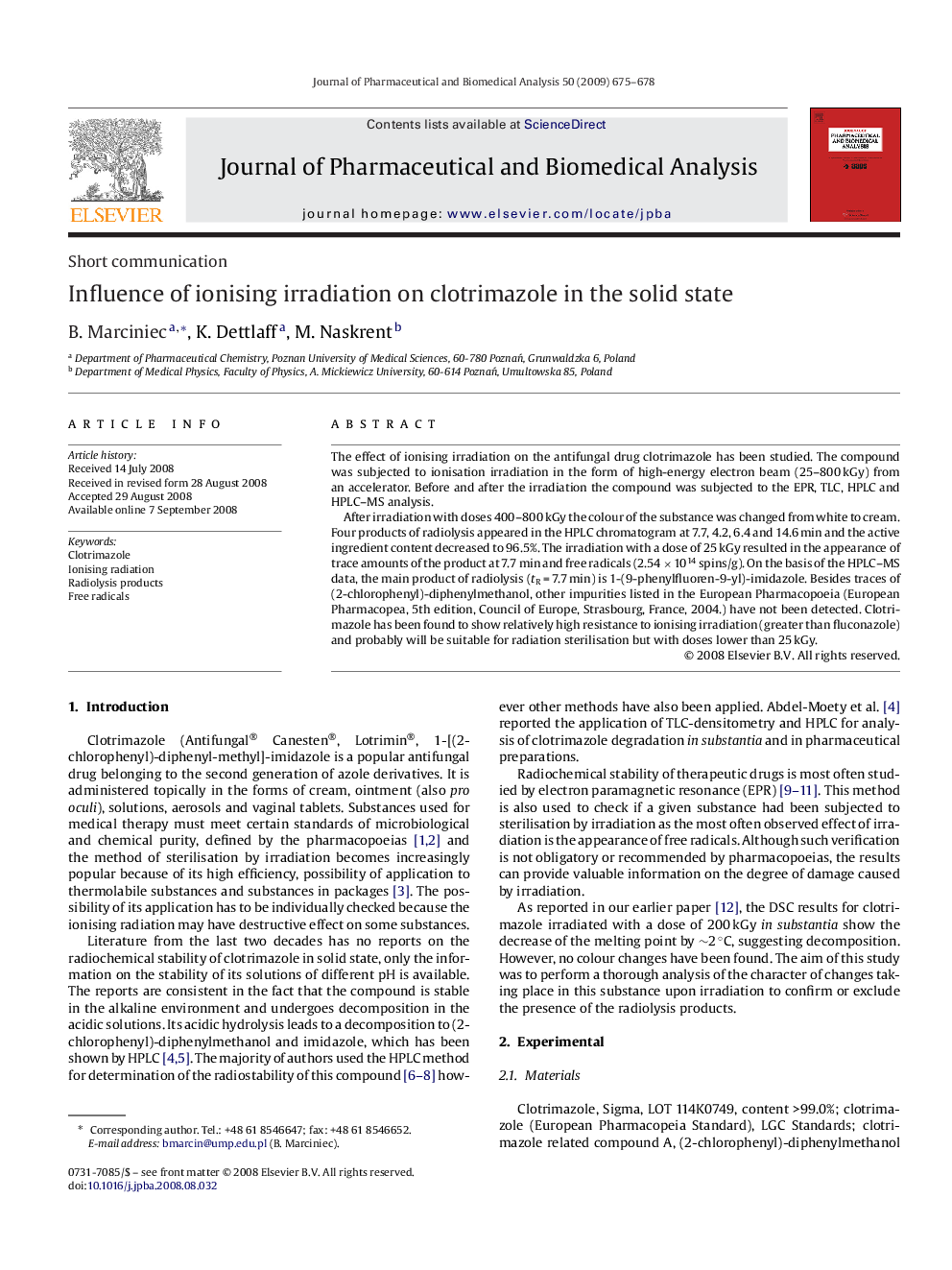| Article ID | Journal | Published Year | Pages | File Type |
|---|---|---|---|---|
| 1223488 | Journal of Pharmaceutical and Biomedical Analysis | 2009 | 4 Pages |
The effect of ionising irradiation on the antifungal drug clotrimazole has been studied. The compound was subjected to ionisation irradiation in the form of high-energy electron beam (25–800 kGy) from an accelerator. Before and after the irradiation the compound was subjected to the EPR, TLC, HPLC and HPLC–MS analysis.After irradiation with doses 400–800 kGy the colour of the substance was changed from white to cream. Four products of radiolysis appeared in the HPLC chromatogram at 7.7, 4.2, 6.4 and 14.6 min and the active ingredient content decreased to 96.5%. The irradiation with a dose of 25 kGy resulted in the appearance of trace amounts of the product at 7.7 min and free radicals (2.54 × 1014 spins/g). On the basis of the HPLC–MS data, the main product of radiolysis (tR = 7.7 min) is 1-(9-phenylfluoren-9-yl)-imidazole. Besides traces of (2-chlorophenyl)-diphenylmethanol, other impurities listed in the European Pharmacopoeia (European Pharmacopea, 5th edition, Council of Europe, Strasbourg, France, 2004.) have not been detected. Clotrimazole has been found to show relatively high resistance to ionising irradiation (greater than fluconazole) and probably will be suitable for radiation sterilisation but with doses lower than 25 kGy.
